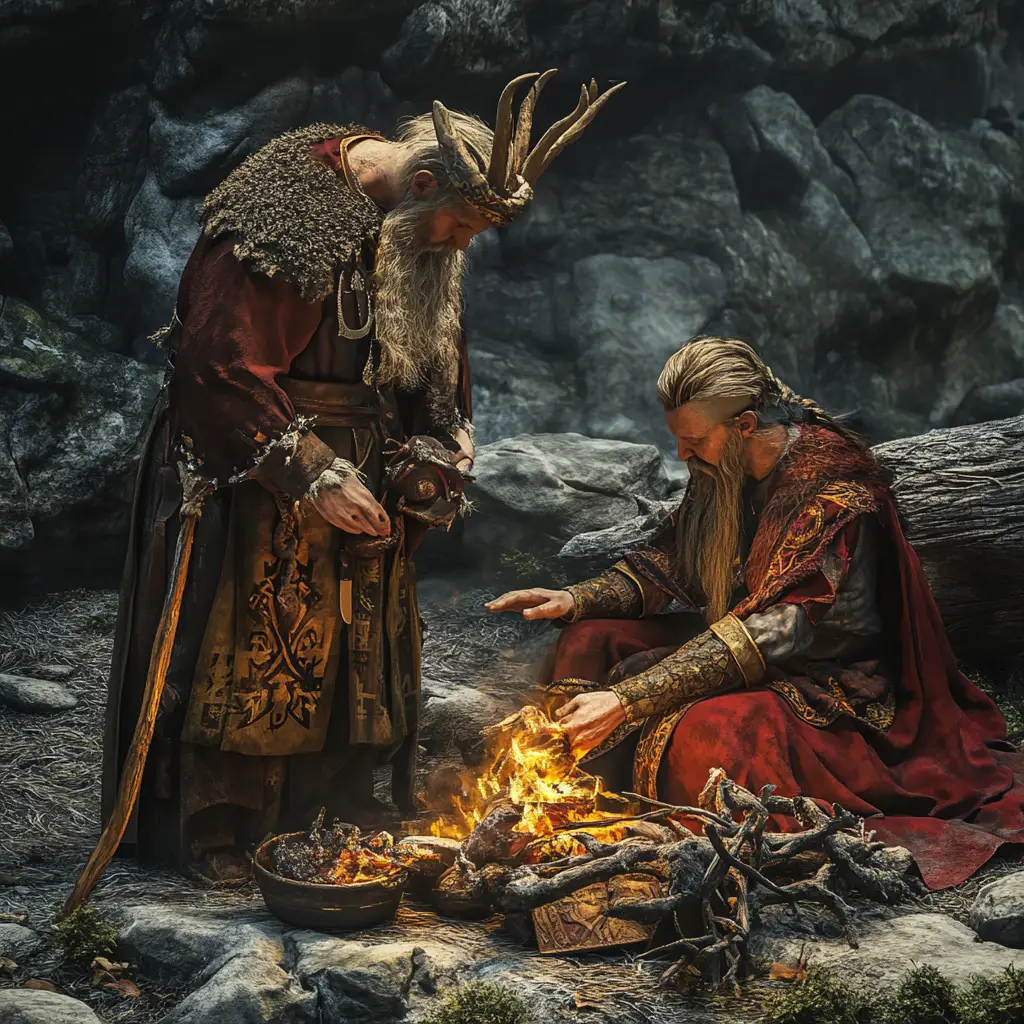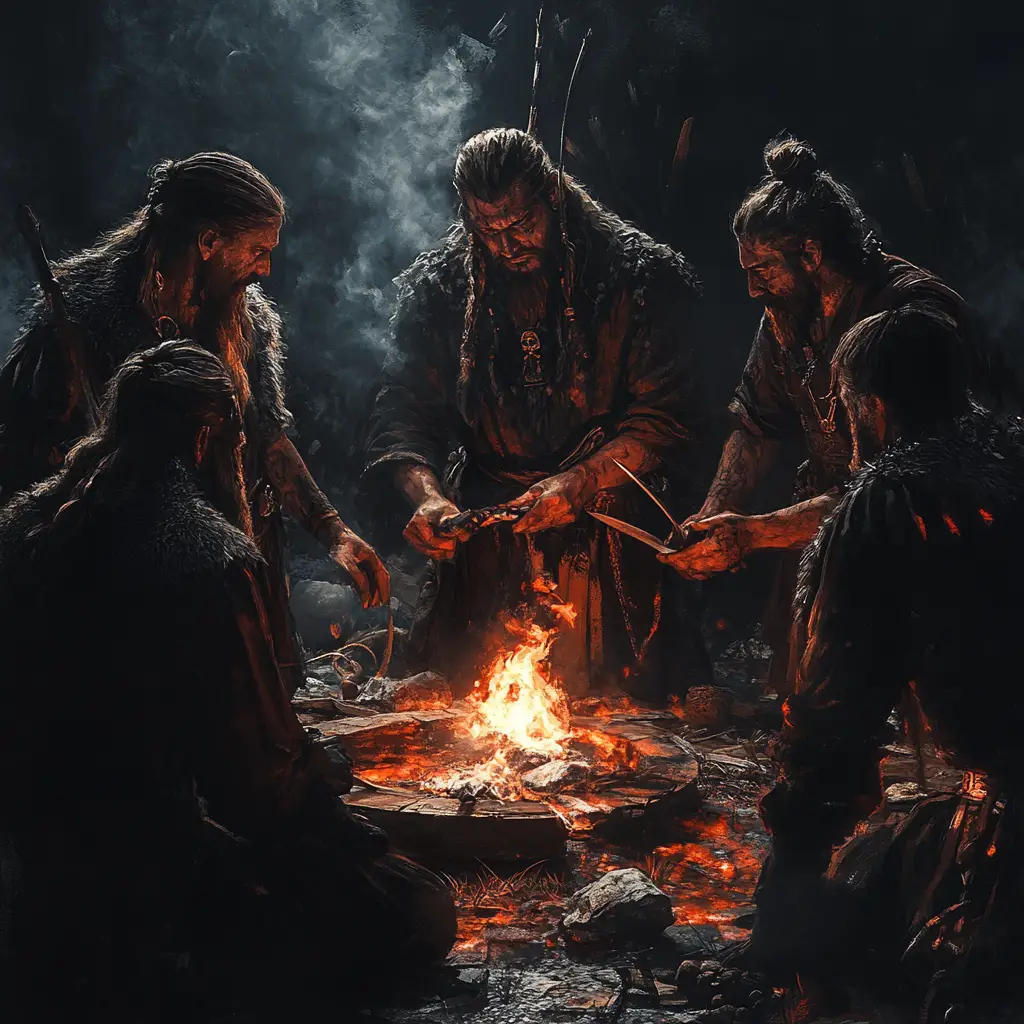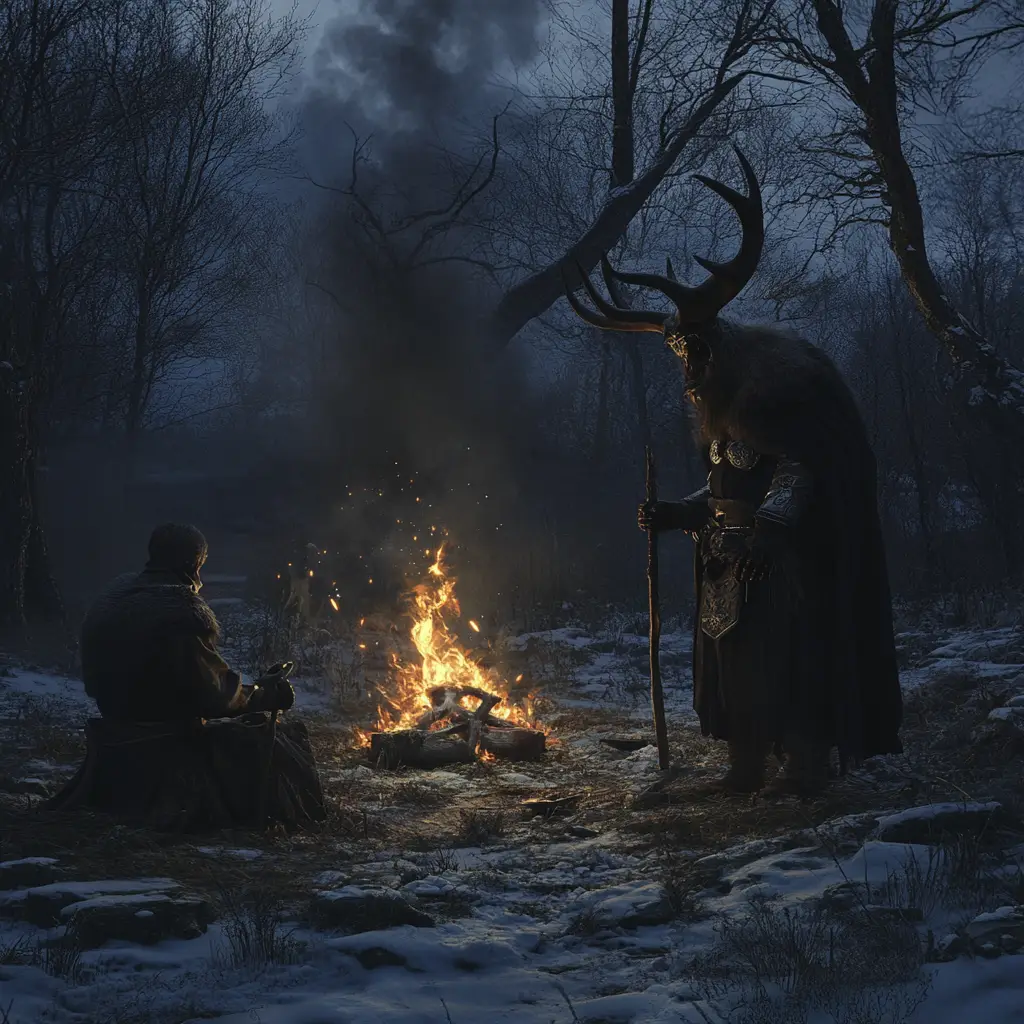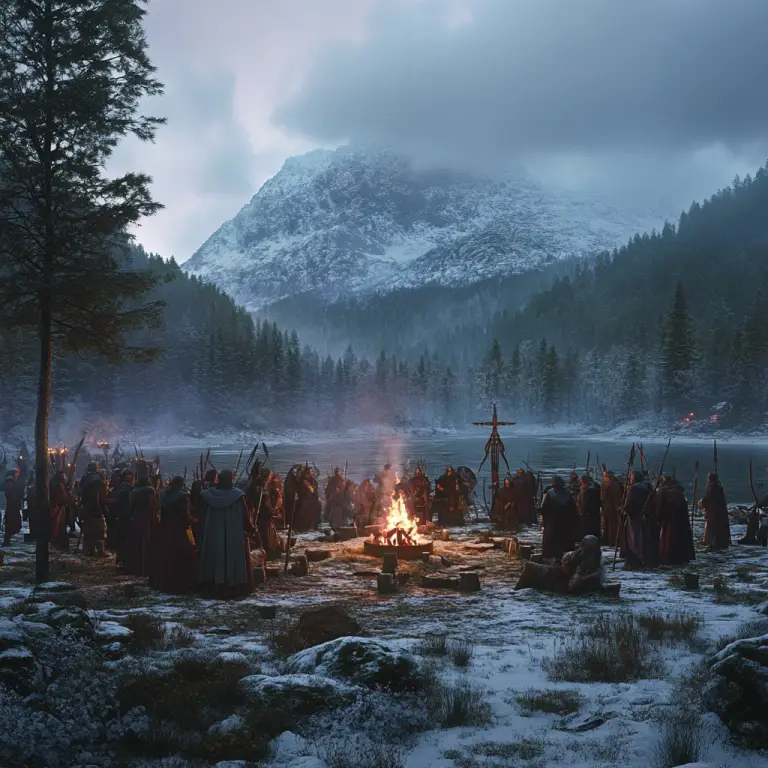Blót was a significant ritual in Norse paganism, involving sacrificial offerings to the gods, spirits, and ancestors. These ceremonies were conducted to honour the divine, secure good fortune, and maintain the balance between humans and the spiritual world. The word “blót” itself translates to “sacrifice” or “offering.”
Purpose
The purpose of a blót was to ensure prosperity, fertility, protection, or success in endeavours such as warfare, agriculture, or seafaring. These rituals were performed to seek favour from the gods or to give thanks for blessings received.
Blót could be held on seasonal festivals, during crises, or before significant ventures. For example, there were autumn and spring sacrifices, as well as those tied to the harvest or the winter solstice.
Sacrifices
Animal Sacrifice: Animals, such as pigs, horses, or cattle, were the most common offerings during a blót. Their blood (called hlaut) was collected and sprinkled on altars, idols, and participants to sanctify the ritual space. The meat of the sacrificed animals was then cooked and eaten in a communal feast.
Human Sacrifice: In extreme or special circumstances, human sacrifices were also made, especially in times of famine, war, or in cases of very important religious or political rites. Though rare, this practice has been attested to in some sagas and historical texts.
Food and Drink: Along with animals, food offerings, mead, and ale were poured out as libations for the gods. The feasting and drinking after the sacrifice were integral parts of the ritual, creating a bond between the participants and the gods.
Gods and Spirits Honored
Æsir and Vanir: The major Norse gods, such as Odin, Thor, Freyja, and Freyr, were often the focus of blót ceremonies. People would make offerings to specific gods based on the occasion. For example, Freyr was honored for fertility and a good harvest, while Thor was invoked for protection and strength.
Landvættir and Ancestors: In addition to the gods, people also sacrificed to local spirits (known as landvættir) and the spirits of ancestors. This connected the ritual to the land and the family lineage.
Locations
Blóts were held in various places, ranging from temples (hofs), such as the famous temple at Uppsala in Sweden, to outdoor sacred groves (vé) or individual farmsteads. The place of sacrifice was considered holy, and the rituals performed there were treated with great reverence.
Feasting and Social Bonding
After the sacrifices, the community would gather for a communal feast, often seen as a way of sharing the bounty with the gods. The feast was a vital part of the ritual, symbolizing unity between the divine, the participants, and the community as a whole.
It was also a social occasion, reinforcing communal bonds and allowing for discussions of important matters, political decisions, and celebrations.
Notable Examples
Althing Blót In some sagas, such as Landnámabók (The Book of Settlements), communal blóts were held during significant events, like the Althing (the Icelandic assembly), where important matters of law and governance were discussed alongside religious rituals.
The Uppsala Blót Adam of Bremen describes a famous blót held every nine years at the temple of Uppsala, where sacrifices (including human ones) were made to gods like Odin, Thor, and Freyr. This blót was described as a grand public event that united many Scandinavian tribes.
The blót was central to Norse religious life, providing a way for communities to interact with the divine, maintain cosmic balance, and ensure prosperity. It was both a spiritual and social activity, blending ritual, politics, and community bonding.



